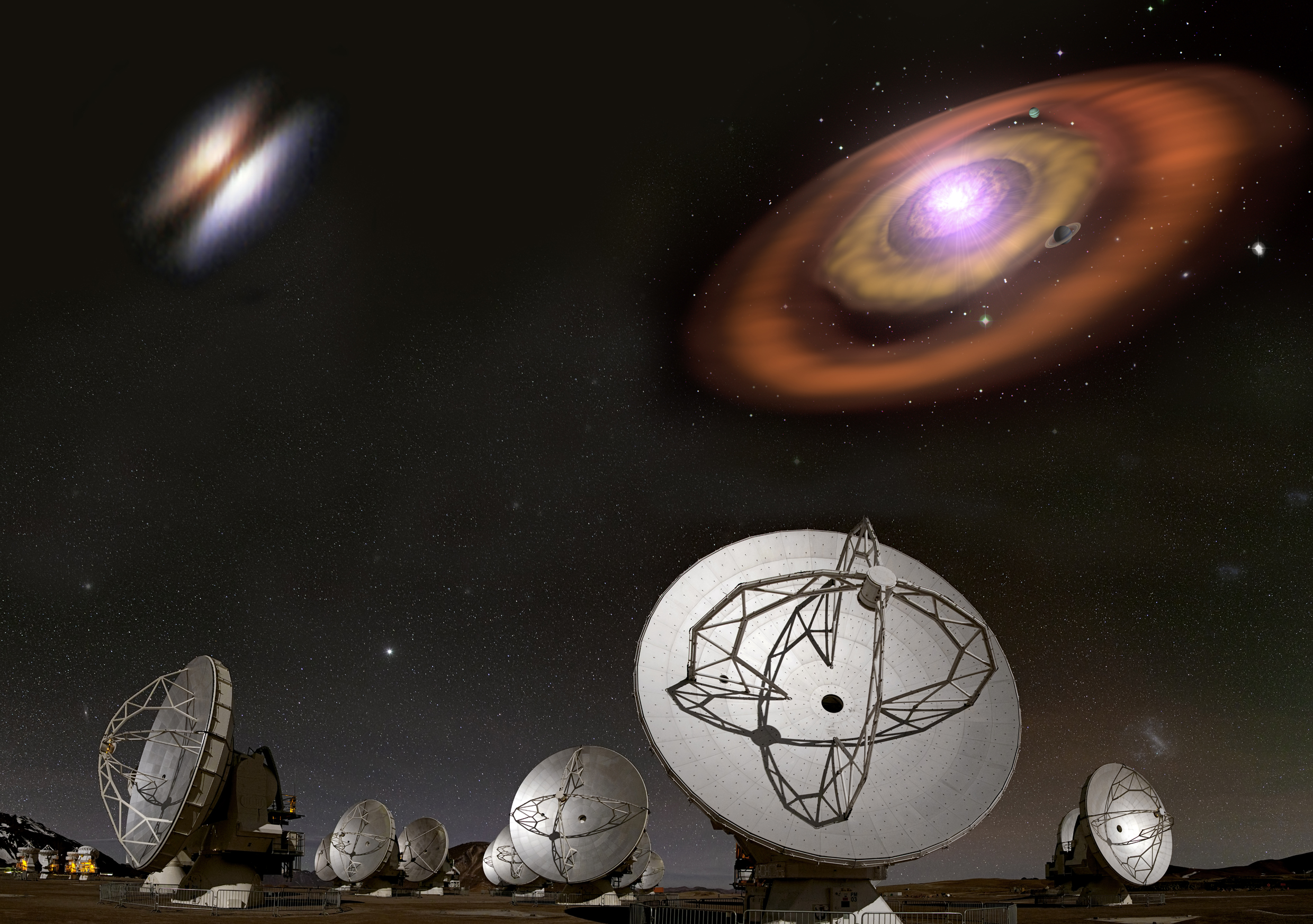The Flying Saucer Disk Project
Formation and evolution of the Sun, other stars, and planets is one of the most intriguing topics that puzzles humanity since centuries. According to contemporary knowledge, a Sun-like star is formed by the gravitational contraction of a quiscent dense clump located inside a large molecular cloud (made primarily of molecular hydrogen). The star formation process is fast (in astronomical sense) and takes only several million years to produce a star, leaving a few percent of the initial gas and dust matter in a form of a rotating accretion disk called protoplanetary disk (see Figure in the bottom of this page). It is in the protoplanetary disks where small dust grains collide and gradually grow, forming planetesimals, asteroids, comets and, eventually, planets. During the planet build-up phase that takes another several to tens of million years the remaining gas becomes partly dispersed and partly accreted onto the young planets, shaping the composition and properties of their primordial atmospheres. The detailed physics and chemistry of the star and particularly planet formation processes are complex and remain poorly understood.
The major difficulty here was primarily the lack of telescopes able to provide necessary ultra-sharp resolution to clearly image the planet-forming regions. However the situation is rapidly changing now thanks to the advent of new powerful ground-based and space-borne observational facilities. With the new facilities such as the Atacama Large Millimeter Array (ALMA) or NOrthern Extended Millimeter Array (NOEMA) operating at sub-millimeter wavelengths, forthcoming infrared James Webb Space Telescope (JWST), and many other large telescopes we are able for the first time in history to directly observe how planet formation proceeds in nearby protoplanetary disks, which are analogs of our own solar system at extreme youth. These new instruments provide or will provide a lot of new detailed information about thermally emitting dust grains and various molecules in these disks. To make sense out of all these data international cooperation and large-scale coordinated efforts from scientists accros the globe are required.
This is precisely the aim of our international large collaboration that brought together astronomers from Europe, United States, Japan and Taiwan. Currently we are working on a project that is devoted to detailed study of an unique protoplanetary disk around a Sun-like star that is seen essentially edge-on, thereby nicknamed "Flying Saucer" (see an upper left picture in the Figure below). In this web page you will find the detailed information about the "Flying Saucer" object, our team composition and expertise, the science goals we want to achieve, our publications. In the future we will share here publicly available observational data provided in the scientifically recognised FITS and CASA formats.

Caption: (Top left) Near infrared HST/NICMOS2 image of the Flying Saucer protoplanetary disk seen almost edge-on. The dark lane in the center is due to small dust grains absorbing and blocking the light from the young star. The bright lobes are produced by the stellar light scattered by the dust at elevated heights from the disk central plane (credit: ESO). (Top right) An artist's impression of a protoplanetary disk made of gas and dust where a planetary system is forming. The most massive planetary body cleared its orbit from the gas and dust debris, creating a clearly visible gap (credit: MPIA). (Bottom) The night photo of the radio antennas of the Atacama Large Millimeter Array (ALMA) in St.-Pedro de Atacama desert, Chile. This is one of the largest (sub)-millimeter interferometers in the world, with which astronomers hope to unravel mysteries of star and planet formation.
- April 21st, 2016 The ALMA Cycle 4 proposal due.
- April 1st, 2016 The Flying Saucer web page has lifted off.
